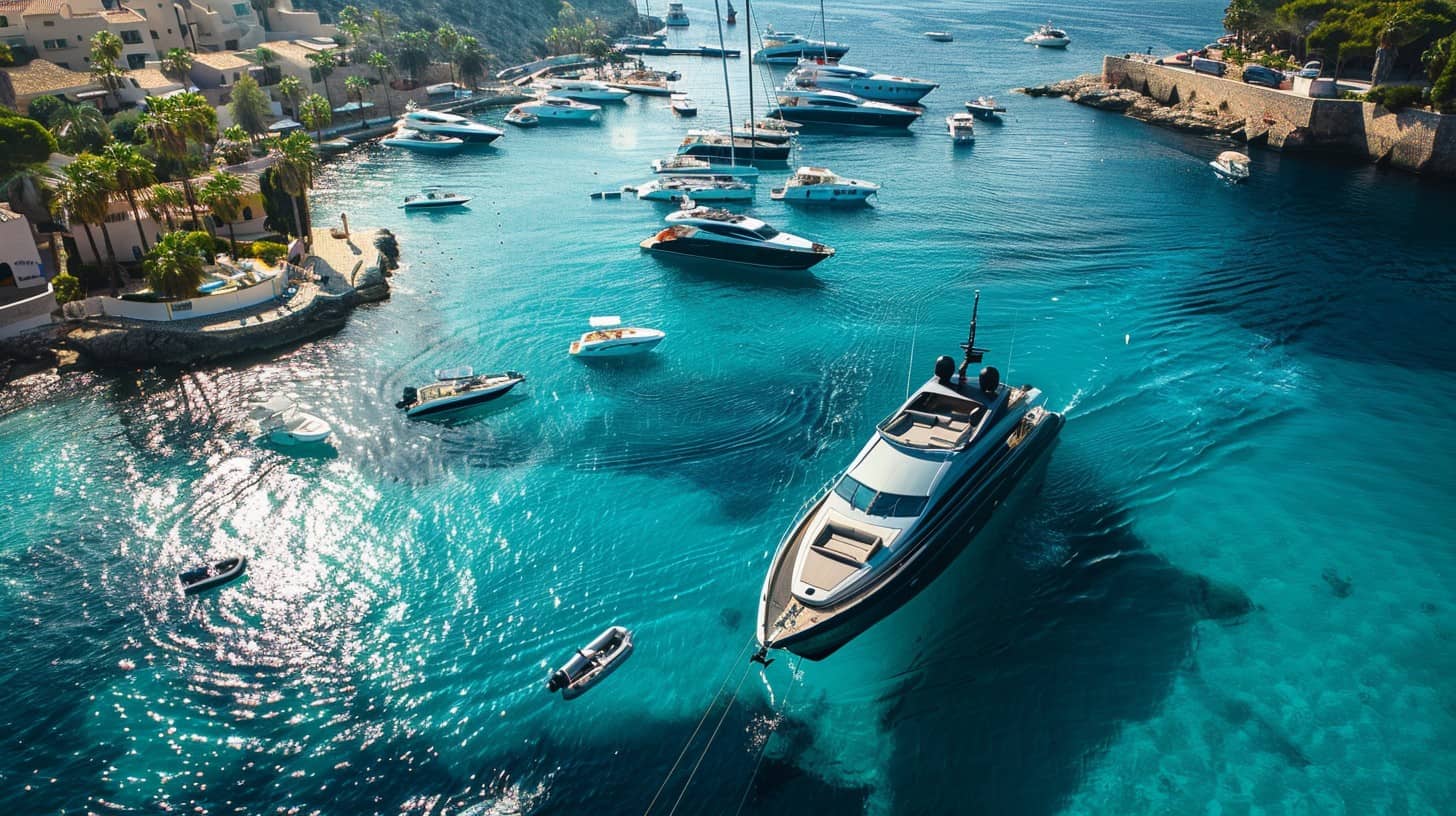Ever dreamed of cruising the open waters, feeling the wind in your hair, and casting a line into the deep blue? Well, hold onto your life jackets, folks! Boat ownership isn’t just about sunsets and fish tales.
It’s a financial voyage that can make even the saltiest sailor’s wallet quiver. Did you know the average price for a new boat from the last decade is a whopping $47,000? That’s enough to make anyone’s eyes pop! 3
As a seasoned sailor who’s handled these choppy financial waters for years, I’ve seen my fair share of sticker shock. From dinghies to yachts, I’ve crunched the numbers on every type of vessel you can imagine.
Trust me, there’s more to boat costs than just the price tag. 1 Ready to explore the nitty-gritty of boat economics? Grab your calculator and let’s set sail! 2
Key Takeaways
Boat prices vary widely, with new boats averaging $47,000 and used boats often costing less than 50% of new prices.
Annual maintenance costs are typically 10% of a boat’s purchase price, with smaller boats averaging around $2,000 per year.
Boat insurance usually costs 1-5% of the boat’s value annually, while fuel and storage expenses can add thousands more each year.
Boat prices are influenced by factors like season, location, brand, and quality, with fall being a good time to find discounts.
Fishing boats range from $10,000-$70,000 for smaller vessels to over $450,000 for large models, while luxury yachts start around $300,000 and can cost millions.
Table of Contents
Understanding Boat Purchase Costs
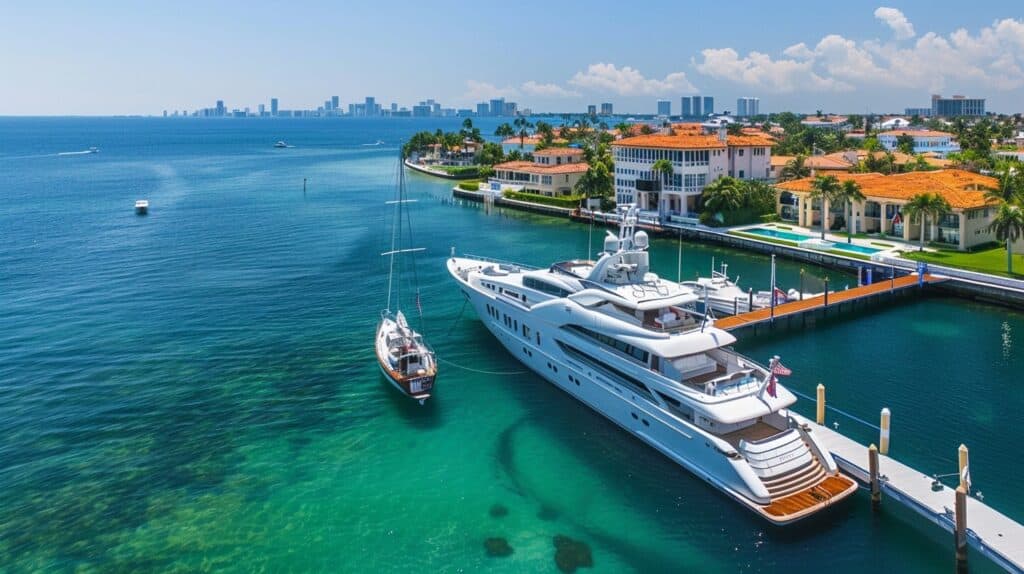
Boat prices can make your jaw drop. New vessels often cost more than a house, while used ones might set you back less than a car.
Comparing New versus Used Boat Prices
New vs. used boats: it’s a choice that can affect your wallet. Let’s look at boat prices and see how they compare.
| Aspect | New Boats | Used Boats |
|---|---|---|
| Initial Cost | Higher – full retail price | Lower – often less than 50% of new |
| Depreciation | 10% in first year, 6-8% after | Slower rate, steadier value |
| Customization | Full options available | Limited to existing features |
| Warranty | Full manufacturer coverage | Limited or no warranty |
| Maintenance | Minimal initially | May require immediate work |
| Technology | Latest gadgets and gizmos | Older tech, potential upgrades needed |
Experienced sailors often prefer pre-owned vessels. Why? They’ve learned… and know the hidden costs. New boats from Moomba might catch your eye, but they’ll drain your savings faster than you can say “man overboard.”
Used boats? They’re like a trusty pair of deck shoes – comfortable, reliable, and easy on the pocket. Plus, they’ve already gone through the initial depreciation. 1 You’re not just buying a boat; you’re making a smart sailing choice.
But hey, if you want the best rough water boats with new tech, new might be your thing. Just keep in mind – that shiny hull costs a lot. It’s like buying a new car… except it floats.
My first boat? A used 20-footer. It wasn’t perfect, but it taught me more about sailing – and saving – than any glossy brochure ever could. 2 Sometimes, the best adventures start with a little wear and tear.
So, new or used? It’s your call, captain. Just consider your options carefully… your wallet depends on it!
Evaluating Average Prices by Boat Type
Boat prices can make your head spin. Let’s break it down by type. Here’s a quick look at what you might shell out for different vessels:
| Boat Type | Average Price Range |
|---|---|
| Small Boats (6-10 feet) | $500 – $800 |
| Pontoon Boats | $10,000 – $80,000 |
| Sailboats | Starting at $5,000 |
| Yachts | Starting at $500,000 |
| Fishing Boats (Aluminum) | $25,000+ |
| Fishing Boats (Fiberglass) | $32,000 – $35,000 |
| Speedboats | $30,000 – $75,000 |
These prices? They’re just the start. Your wallet might feel lighter or heavier depending on extras, brand, and where you buy. I once thought I’d scored a deal on a pontoon… until I saw the fuel bills. Ouch! Keep in mind, guys – the sticker price isn’t everything. Think about upkeep, storage, and those inevitable “surprises” that come with boat ownership. Trust me, your future self will thank you for being savvy now. 4
Initial Investments for Boat Ownership
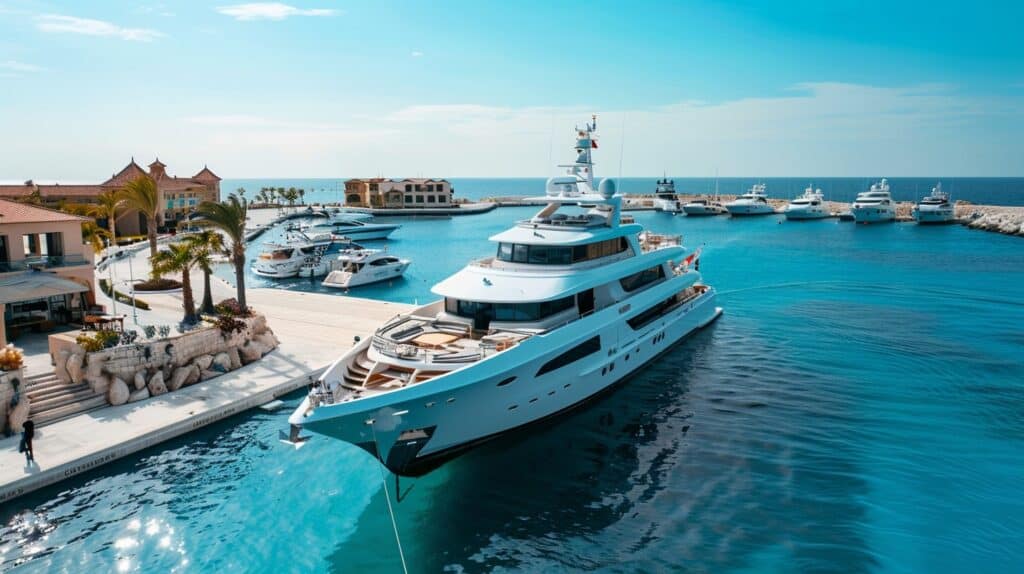
Buying a boat isn’t just about the sticker price. You’ll need to factor in a boatload of other costs too – from fancy gadgets to essential gear.
Variations in Costs by Boat Size and Style
Boat size and style play a huge role in price tags. A tiny Class A vessel under 16 feet might set you back just a few grand. But jump up to a Class 3 yacht over 40 feet? You’re looking at six or seven figures, easy. 5 It’s not just length, though. Fancy features and high-end finishes can make costs skyrocket. Boats from Moomba, known for their wake-surfing prowess, often command premium prices due to their specialized design.
Style matters too. A simple fishing skiff costs way less than a tricked-out cabin cruiser with all the bells and whistles. And don’t forget about power – sailboats tend to be cheaper than their gas-guzzling motorboat cousins. 6 But no matter what floats your boat, bigger always means pricier… in purchase price and ongoing expenses. Speaking of expenses, let’s dive into those extra costs that can really add up over time.
Impact of Features and Extras on Initial Price
Boat features and extras can quickly increase your initial price. A basic model might seem affordable, but add a few extras, and you’re looking at a much higher price tag. 7 High-end electronics, custom upholstery, or a fancy paint job can easily add thousands to your purchase.
It’s like buying a car – that base model looks great until you start adding leather seats and a premium sound system.
It’s not the boat that sinks you, it’s all the fancy gadgets you can’t resist adding to it.
Don’t get caught up in the appeal of every shiny add-on. Some extras, like safety equipment or reliable navigation tools, are worth the investment. Others, like that built-in margarita maker, might be best left as a DIY project later on.
Each feature increases not just your initial cost, but potentially your insurance premiums and maintenance expenses too. 3 So, choose carefully and keep your wallet… and your boat…
afloat.
Regular Expenses for Boat Owners
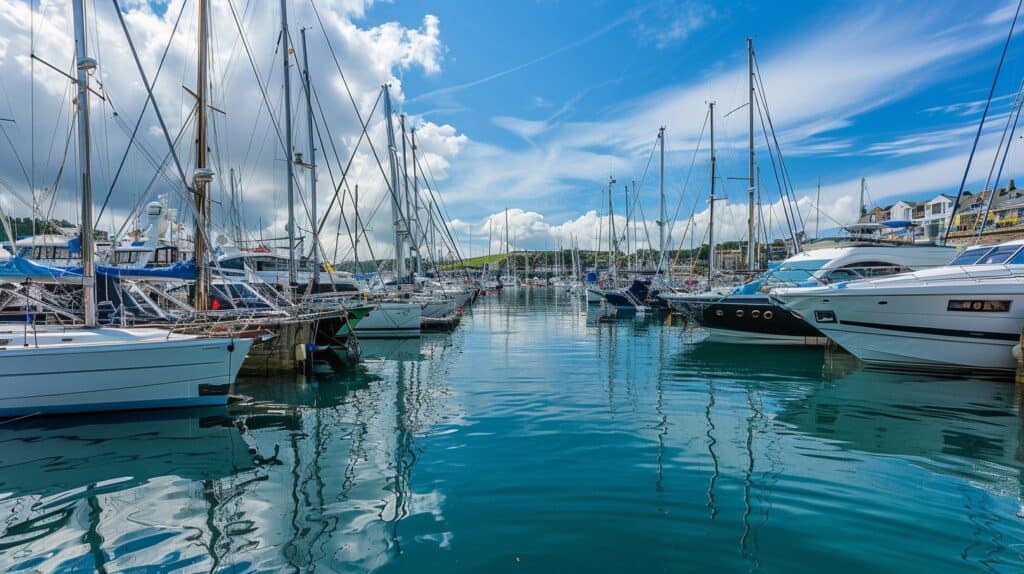
Owning a boat isn’t just about the initial purchase. It’s a journey filled with ongoing costs that can catch you off guard if you’re not prepared. From keeping your vessel shipshape to fueling up for those weekend adventures, the expenses can add up faster than you’d think.
Breakdown of Maintenance and Repair Costs
Boat maintenance and repair costs can sink your budget if you’re not careful. Let’s break down these expenses so you can navigate the financial waters like a pro.
- Annual Maintenance: Plan to shell out about 10% of your boat’s purchase price each year. For smaller boats, this averages around $2,000 annually. 9
- Sailboat Upkeep: If you’re into wind power, expect to spend $2,000 to $3,000 yearly on your sailboat’s maintenance. 8
- Winterization: Don’t let the cold catch you off guard. Set aside $150 to $600 each year to protect your vessel during the off-season. 8
- Engine Tune-ups: Regular check-ups keep your motor purring. Budget for oil changes, filter replacements, and general engine maintenance.
- Hull Maintenance: Keeping your boat’s bottom clean and protected is crucial. Factor in costs for bottom paint, cleaning, and potential repairs.
- Electronics Upgrades: GPS systems, fish finders, and radios might need occasional updates or replacements. Don’t forget to budget for these tech expenses.
- Rigging and Sail Replacement: For sailboats, replacing worn rigging or sails can be a significant expense. Plan ahead for these periodic costs.
- Unexpected Repairs: Sometimes things break. Set aside a rainy-day fund for surprise fixes, like a damaged propeller or a leaky hatch.
- Cleaning Supplies: Regular cleaning keeps your boat shipshape. Budget for specialized marine cleaning products and tools.
- Professional Services: Some jobs require expert hands. Factor in costs for professional inspections, complex repairs, or specialized maintenance tasks.
Analysis of Fuel and Operating Expenses
Fuel and operating expenses can make or break your boating budget. Let’s dive into the nitty-gritty of these costs and see where your money might be sailing off to.
- Fuel Costs:
- Marine fuel (90-octane unleaded) hits the wallet harder due to its ethanol-free nature
- Consumption varies wildly by boat type – a small fishing boat sips, while a yacht guzzles 5
- Usage frequency plays a big role – weekend warriors spend less than daily cruisers
- Operational Expenses:
- Oil changes, much like cars, but pricier due to specialized marine-grade products
- Pumps and batteries need regular replacement – salt water isn’t kind to these components
- Lights aren’t just for show – they’re a safety requirement and a recurring expense
- Size Matters:
- Larger boats generally burn through cash faster than their smaller counterparts 10
- More space means more systems to maintain, from air conditioning to waste management
- Bigger vessels often require professional maintenance, adding labor costs to the mix
- Specialized Equipment:
- Navigation gear isn’t cheap – GPS units and depth finders add up quickly
- Safety equipment like life jackets and flares need regular replacement
- Fishing boats require tackles, rods, and other gear that need constant upkeep
- Storage Costs:
- Dry dock or wet slip? Both options come with hefty price tags
- Winter storage in colder climates adds another layer of expense
- Trailer storage at home might save money but consider space and HOA restrictions
Costs Related to Storage and Mooring
Boat storage costs can be expensive. Here’s a breakdown of options for keeping your boat safe when it’s not in use.
- Dry stack storage: This costs $10-$20 per foot monthly. Your boat is lifted and stored in a covered rack.
- Marina berths: Starting at $55 per foot monthly, these wet slips keep your boat in the water, ready to go.
- Self-storage facilities: A cheaper option at up to $10 per foot monthly. It’s basic but effective. 11
- At-home storage: Seems free, but consider trailer costs (starting around $700) and possible HOA fees or local rules.
- Winter storage: You might need to pay extra to protect your boat from cold weather, depending on where you live.
- Mooring balls: Can be cheaper than marina slips in some areas, but you’ll need a small boat to reach your vessel.
- Insurance considerations: Some storage choices may impact your boat insurance costs, so keep that in mind. 7
Now that we’ve covered storage costs, let’s look at the expenses of maintaining your boat.
Overview of Boat Insurance, Taxes, Certifications, and Registrations
Now that we’ve covered storage and mooring costs, let’s look at the paperwork side of boat ownership. Get ready, guys – we’re about to check out insurance, taxes, and regulations.
- Boat Insurance: A necessary safeguard that’ll protect you
- Usually costs 1% to 5% of your boat’s value. 7
- For a $20,000 boat, expect to pay $200 to $1,000 yearly
- Covers theft, damage, and liability – your financial safety net
- Taxes: The government wants its share
- Sales tax differs by state – Minnesota charges 7.125% on boats
- Don’t forget trailer tax – 6.5% in Minnesota 11
- Property tax might apply in some areas – check local rules
- Certifications: Showing you know your stuff
- Boating safety courses often needed – prices vary
- Some states require operator licenses – plan for fees
- Extra certifications for specific activities (e.g., fishing)
- Registrations: Making it legal
- Fees range from $20 to over $200, based on boat size and state
- Renewal times vary – keep track
- Fines for expired registration can be high – stay current
- Hidden costs: The unexpected expenses that’ll surprise you
- Title transfer fees for used boats
- Environmental fees in some places
- Possible extra permits for certain waterways
- Saving strategies: Cutting costs from your boating budget
- Combine insurance with home/auto for discounts
- Take safety courses for potential insurance savings
- Pay registration fees for multiple years upfront – sometimes cheaper
- Financing options: Checking out credit choices
- Your credit score affects insurance rates and loan terms 7
- Personal loans or HELOCs might have better rates than boat-specific loans
- Think about the effect on your debt-to-income ratio before deciding
Variables Affecting Boat Pricing
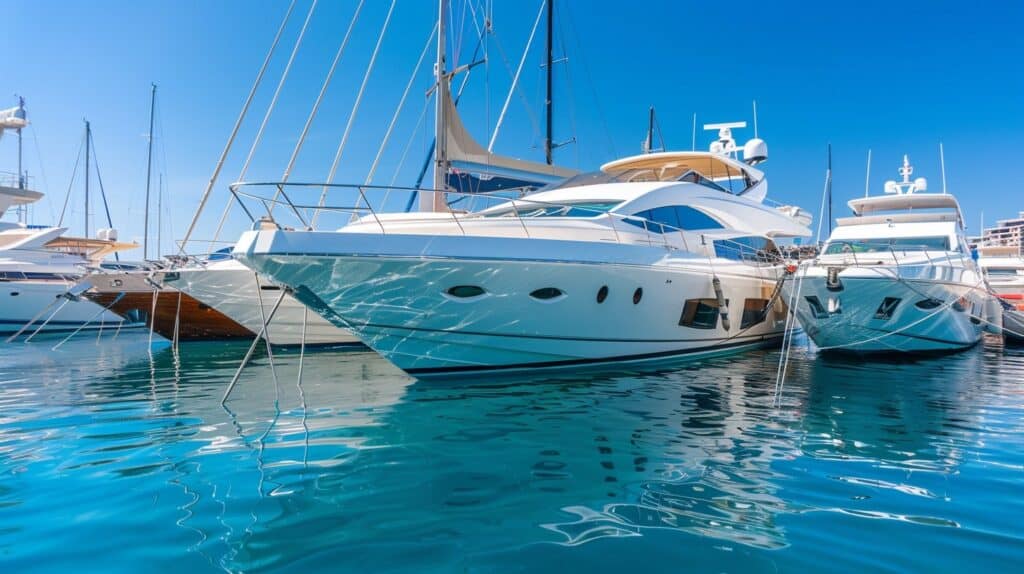
Boat prices can swing wildly based on factors like season, location, and brand reputation. Ready to dive deeper? There’s a boatload more to uncover about what drives those price tags up… or down.
Influence of Season and Location on Prices
Boat prices dance to the tune of seasons and zip codes. Fall’s the sweet spot for snagging deals – discounts start rolling in come September. 13 But it’s not just about timing; where you dock or store your vessel can make your wallet sing or cry.
From New England to the Gulf Coast, prices swing like a pendulum.
Location, location, location – it’s not just for real estate anymore!12
Ever thought about hauling out your boat? Or transporting it cross-country? Insurance costs got you scratching your head? These expenses can vary wildly depending on where you drop anchor.
Savvy sailors keep their eyes peeled for those seasonal discounts that kick off in autumn and sail through winter. It’s a game of patience and strategy… and sometimes, a bit of luck.
Impact of Brand and Manufacturing Quality
Moving from seasonal pricing, let’s talk quality. Brand reputation and manufacturing standards play a huge role in boat costs. Top-tier names like boats from Moomba often command premium prices, but for good reason.
They’re built to last. 15
I’ve seen firsthand how quality can make or break a boat. My buddy bought a bargain vessel last year… big mistake. It’s been nothing but trouble. Meanwhile, my cousin’s well-crafted cruiser from a reputable maker is still going strong after a decade.
Sure, he paid more upfront, but it’s been smooth sailing since. With increased demand lately, some builders might cut corners. But the best brands? They’re sticking to their guns, maintaining top-notch construction despite the pressure.
It’s a smart move – inferior builds could lead to major headaches down the road. 14
Cost Analysis of Specific Boat Types
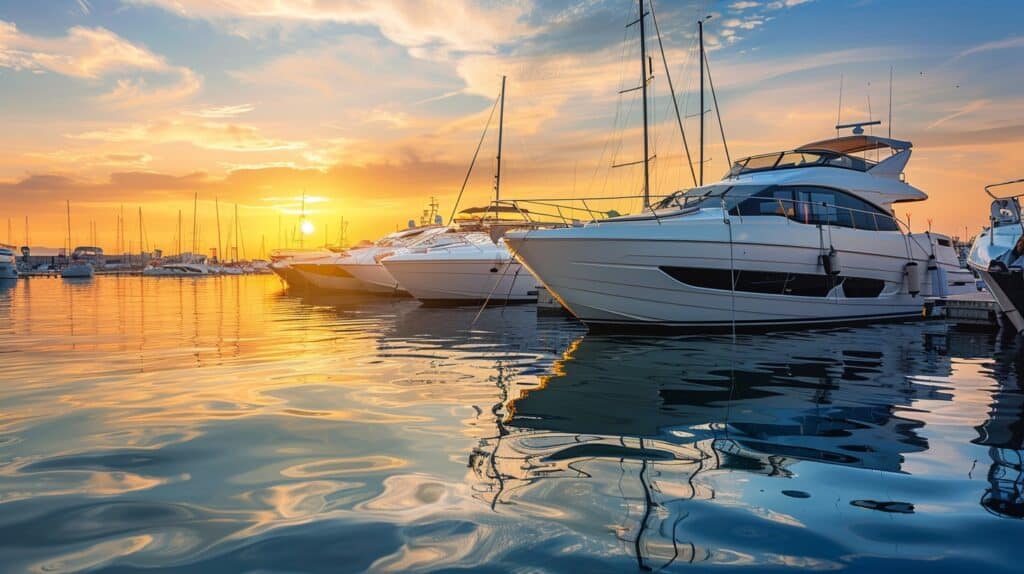
Ready to dive into the nitty-gritty of boat prices? From humble fishing skiffs to swanky yachts, we’ll break down the costs that’ll make your wallet sing – or cry. Buckle up, sailor…
this ride might get choppy!
Economic Considerations for Fishing Boats
Fishing boats can be a significant investment. Smaller vessels, around 16 to 20 feet, might set you back $10,000 to $70,000. 17 That’s quite a range! But here’s the kicker – as you go bigger, the price tag skyrockets.
Mid-size boats (21-25 feet) can cost anywhere from $60,000 to over $150,000. And if you’re eyeing those twin-engine beauties in the 26-30 foot range? Better have $150,000 to $300,000 stashed away.
For the high-rollers out there, large fishing vessels (32-36 feet) start at $200,000 and can easily exceed $450,000. 17 Ouch! But don’t let these numbers scare you off. There’s a boat for every budget – it’s all about finding the right balance between size, features, and your wallet.
Speaking of features, let’s dive into how extras can impact the initial price of your dream vessel… 16
Price Factors for Sailboats
Moving from fishing boats to sailboats, we’re shifting gears… or should I say, changing tacks? Sailboats have their own set of price factors that’ll make your wallet either sing or weep.
Size matters big time here, fellas. A small day sailor might set you back about $30,000 – not pocket change, but manageable. 12 But if you’re eyeing those ocean-going beauties? Whew, better have deep pockets ’cause we’re talking millions.
Age and condition play huge roles too. A shiny new sailboat fresh off the production line? Yeah, that’ll cost ya more upfront. 12 But hey, you might save on repairs down the road.
Features can really jack up the price – roller furling, spinnakers, fancy electronics… they all add up. And don’t forget brand power. Some names carry more weight – and a heftier price tag – than others.
It’s like choosing between a Ford and a Ferrari… both’ll get you there, but one’s gonna turn more heads at the marina. 18
Costs Associated with Yachts and Luxury Vessels
While sailboats offer a wind-powered adventure, luxury yachts take boating to a whole new level. These floating palaces don’t come cheap, though. Entry-level yachts start around $300,000, but prices can quickly soar into the millions for custom superyachts.
You’re not just paying for size – high-end materials, state-of-the-art technology, and lavish amenities all add to the hefty price tag. 19
But the initial cost is just the tip of the iceberg. Yacht owners face steep ongoing expenses too. Annual maintenance can run 10% of the purchase price. Fuel costs for these gas-guzzlers are astronomical.
Then there’s crew salaries, dockage fees, and insurance premiums that’ll make your eyes water. Oh, and don’t forget about depreciation – these babies lose value faster than you can say “anchors aweigh.” Still, for those with deep pockets, the allure of luxury yachting is hard to resist. 20
Budgeting Advice for Prospective Boat Buyers
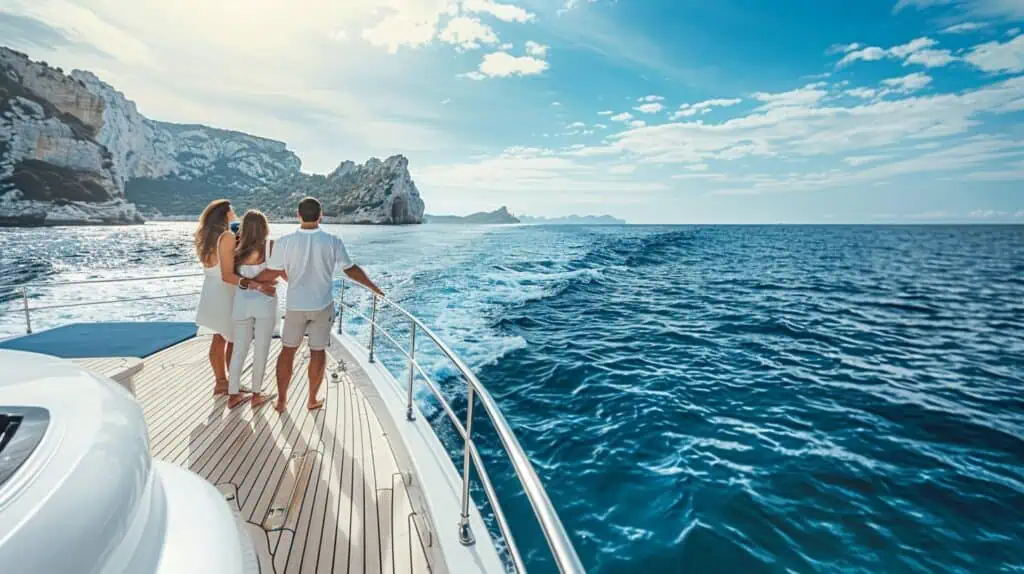
Wanna sail without sinking your savings? Let’s talk smart money moves for future skippers. Here’s the scoop on stretching your boat-buying bucks and keeping those ongoing costs from capsizing your budget.
Strategies to Budget for a Boat Purchase
Savvy sailors know that budgeting for a boat purchase requires careful planning and foresight. Here’s a breakdown of strategies to help you navigate the financial waters of boat ownership:
- Set a realistic budget: Factor in the initial cost, ongoing expenses, and potential financing options. Don’t forget to account for weird boats that might catch your eye – they often come with unique price tags.
- Research financing options: Compare boat loans, personal loans, and dealership financing. Look for low-interest rates and favorable terms to keep your monthly payments manageable. 21
- Consider used boats: Pre-owned vessels can offer significant savings. Inspect thoroughly and factor in potential repair costs to avoid surprises down the line.
- Plan for down payment: Aim for at least 10-20% of the boat’s price. A larger down payment can lead to better loan terms and lower monthly payments.
- Account for ongoing costs: Budget for fuel, maintenance, storage, and insurance. These expenses can add up quickly, so be prepared.
- Explore storage options: Compare marina fees, dry dock costs, and trailer storage to find the most cost-effective solution for your situation.
- Get insurance quotes: Shop around for comprehensive coverage. Boat insurance protects your investment and provides peace of mind on the water.
- Factor in seasonal expenses: Budget for winterization in colder climates or increased fuel costs during peak boating season.
- Consider a boat club membership: This can be a cost-effective alternative to ownership, allowing you to enjoy boating without the full financial commitment.
- Save on accessories: Look for deals on safety equipment, electronics, and other gear. Off-season sales can offer significant discounts.
- Build an emergency fund: Set aside money for unexpected repairs or upgrades. This helps avoid relying on high-interest credit cards for sudden expenses.
- Evaluate state-specific costs: Research boater education requirements and registration fees in your area. These can vary widely by location. 22
- Plan for depreciation: Understand that boats typically lose value over time. Factor this into your long-term financial planning.
- Consider shared ownership: Splitting costs with a trusted friend or family member can make boat ownership more affordable.
- Explore tax deductions: Some boat-related expenses may be tax-deductible. Consult with a tax professional to understand potential benefits.
Tips for Saving on Ongoing Boat Expenses
Keeping your boat afloat doesn’t have to sink your bank account. Here are some money-saving tips that’ll have you sailing smoothly without breaking the bank.
- Do your own maintenance: Roll up your sleeves and tackle minor repairs yourself. Learn to change the oil, clean the hull, or replace spark plugs – you’ll save a bundle on labor costs.
- Join a boat club: Split expenses with like-minded sailors. These clubs often offer shared storage, discounted fuel, and group insurance rates.
- Choose off-season storage: Store your vessel on land during winter months. It’s cheaper than year-round water storage and reduces wear and tear.
- Compare insurance options: Don’t settle for the first quote. Check policies from different insurers to find the best deal for your specific boat type.
- Use ethanol-free fuel: It may cost more upfront, but it’ll prevent engine damage and save you money in the long run. Your motorboat will thank you.
- Install fuel-efficient props: Upgrade to props that match your engine and boat style. You’ll use less gas and enjoy smoother rides.
- Focus on quality over brand-name: For parts and accessories, prioritize durability over fancy logos. Your wallet will appreciate it.
- Look into fractional ownership: Share the costs (and joys) of boat ownership with others. It’s a smart way to cut expenses without sacrificing nautical fun. 23
- Perfect your sailing techniques: Good sailing practices can reduce wear on your equipment. Less wear means fewer replacements and repairs.
- Pack your own meals: Skip the pricey marina restaurants. Bring aboard homemade snacks and lunches for a budget-friendly day on the water.
- Get a good cover: Protect your boat from the elements when it’s not in use. A quality cover prevents damage and extends the life of your vessel.
- Use budgeting tools: Apps like “You Need a Budget” can help you track and plan for boat-related expenses. Knowledge is power… and savings! 24
People Also Ask
How much does a boat cost?
Boat prices vary wildly. A small dinghy might set you back a few grand, while a fancy cabin cruiser could cost millions. It’s like comparing a bicycle to a Bentley!
What hidden costs should I consider when buying a boat?
Don’t forget the sneaky expenses! Maintenance costs, boat registration, insurance, and parking fees can add up faster than you can say “ahoy matey!” Oh, and don’t forget about gasoline – those motorboats are thirsty beasts!
Can I finance a boat like I would a car?
You bet! Many banks offer boat loans. Bank of America, Capital One, and Citi all have options. You could go for a secured loan using the boat as collateral, or an unsecured line of credit if you’re feeling brave.
Do boats hold their value?
Sadly, boats depreciate faster than a melting ice cream on a hot day. They’re more of a fun investment than a financial one. But hey, you can’t put a price on the joy of sailing!
What’s the deal with boat insurance?
Boat insurance is a must-have. It covers risks like accidents, salvage, and liability. Shop around – different insurance companies offer various packages. Remember, better safe than sorry on the high seas!
Are there any tax benefits to owning a boat?
Some savvy sailors use their boats as floating offices, writing off expenses as business costs. But be careful – the IRS isn’t easily fooled. Always consult with financial experts before diving into boat-related tax strategies.
References
^ https://www.boattrader.com/research/the-advantages-of-buying-new-boats-vs-used/ (2024-05-22)
^ https://www.neighbor.com/storage-blog/new-vs-used-boat/
^ https://www.getmyboat.com/journal/lifestyle/how-much-does-it-cost-to-buy-own-a-boat-a-comprehensive-owners-guide/ (2023-05-24)
^ https://www.nboat.com/blog/boat-cost-explained-why-different-types-of-boats-have-substantial-price-ranges.html
^ https://www.dockmaster.com/blog/the-cost-of-boat-ownership-a-detailed-guide/ (2023-06-13)
^ https://www.chegg.com/homework-help/corporate-finance-6th-edition-chapter-11-problem-17p-solution-9781305637108
^ https://www.bankrate.com/loans/personal-loans/cost-of-owning-a-boat/ (2024-04-29)
^ https://www.marinedepotdirect.com/blog/boat-maintenance-statistics (2022-08-18)
^ https://www.skisafe.com/blog/Entry/10/realistic-cost-breakdown-for-boat-ownership- (2022-10-25)
^ https://hanseyachts.com/us/blog/sailing-yacht-running-costs/
^ https://www.discoverboating.com/buying/costs-of-boat-ownership
^ https://www.svsky57.com/blog.html
^ https://www.ask.com/lifestyle/factors-influence-blue-book-price-boats (2023-07-28)
^ https://www.thehulltruth.com/boating-forum/1164506-boat-boom-impact-manufacturing-quality.html (2021-05-26)
^ https://www.cruisersforum.com/forums/f47/brand-comparison-233126.html (2020-04-20)
^ https://www.toms.com.hr/index.php/toms/article/download/668/561/5090
^ https://yachts360.com/how-much-does-a-fishing-boat-cost/ (2021-04-11)
^ https://sailwiththeflo.wordpress.com/2019/07/23/the-real-costs-of-sailing-around-the-world-is-it-as-expensive-as-you-think/ (2019-07-23)
^ https://www.linkedin.com/pulse/how-much-does-boat-cost-merrill-charette
^ https://money.usnews.com/money/personal-finance/spending/articles/how-much-does-it-cost-to-buy-a-boat-versus-a-yacht (2024-06-14)
^ https://www.discoverboating.com/buying/boat-buyers-guide
^ https://www.saltwaterjournal.life/blog/buying-your-first-boat-have-you-budgeted-for-these
^ https://www.discoverboating.com/ownership/saving-money-on-annual-boat-ownership-costs
^ https://www.saltwaterjournal.life/blog/simple-budgeting (2022-12-11)
